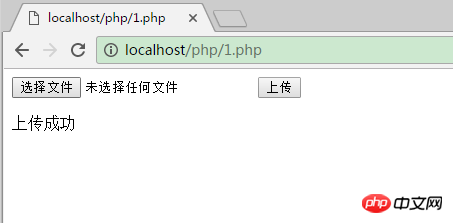
Uploading files is a very common function in PHP development, and it is also very common in daily development. It is much simpler to implement the file upload function in PHP than in other languages. This section introduces the file upload function. and multiple file uploads!
Then in the previous article "php file upload - configure php.inn file and predefined variables $_FILES" we introduced that file upload needs to configure the php.ini file. This is The necessary steps for file uploading and the introduction of predefined variables. Friends who have not yet read it can read it in detail. It will be helpful to read the following article.
File upload function
The move_uploaded_file() function is used in PHP to upload files. The syntax format of this function is as follows:
bool move_uploaded_file ( string $filename , string $destination )
move_uploaded_file() function stores the uploaded file to the specified location. If successful, it will return true, otherwise it will return false. The parameter filename is the temporary file name of the uploaded file, which is $S_FILES[tem_name]; the parameter destination is the new path and name saved after uploading.
This kind of check is particularly important if the uploaded file may cause its content to be displayed to the user or other users of this system.
Note:
move_uploaded_file() is sensitive to both safe mode and open_basedir. However, the restrictions are only for destination paths, as filename filenames allowed for mobile uploads may conflict with these restrictions. move_uploaded_file() only works on files uploaded via PHP to ensure the safety of this operation.
The following example creates an upload form that allows uploading files with a file size of less than 1MB. The specific sample code is as follows:
0){ //判断文件大小 move_uploaded_file($fileinfo['tmp_name'],$fileinfo['name']); //上传文件 echo "上传成功"; }else{ echo '文件太大或未知'; } } ?>
Select a file to upload, the output result is as follows:

Instructions:
Use The move_uploaded_file() function uploads files. When creating a form, you must set the form form's enctype="multipart/form-data".
We have introduced the upload file function here. In the next article, we will introduce multiple file uploads. For details, please read "PHP File Upload-Detailed Explanation of Sample Code for Multiple File Uploads》!
The above is the detailed content of PHP file upload-detailed explanation of the use of move_uploaded_file() function. For more information, please follow other related articles on the PHP Chinese website!




